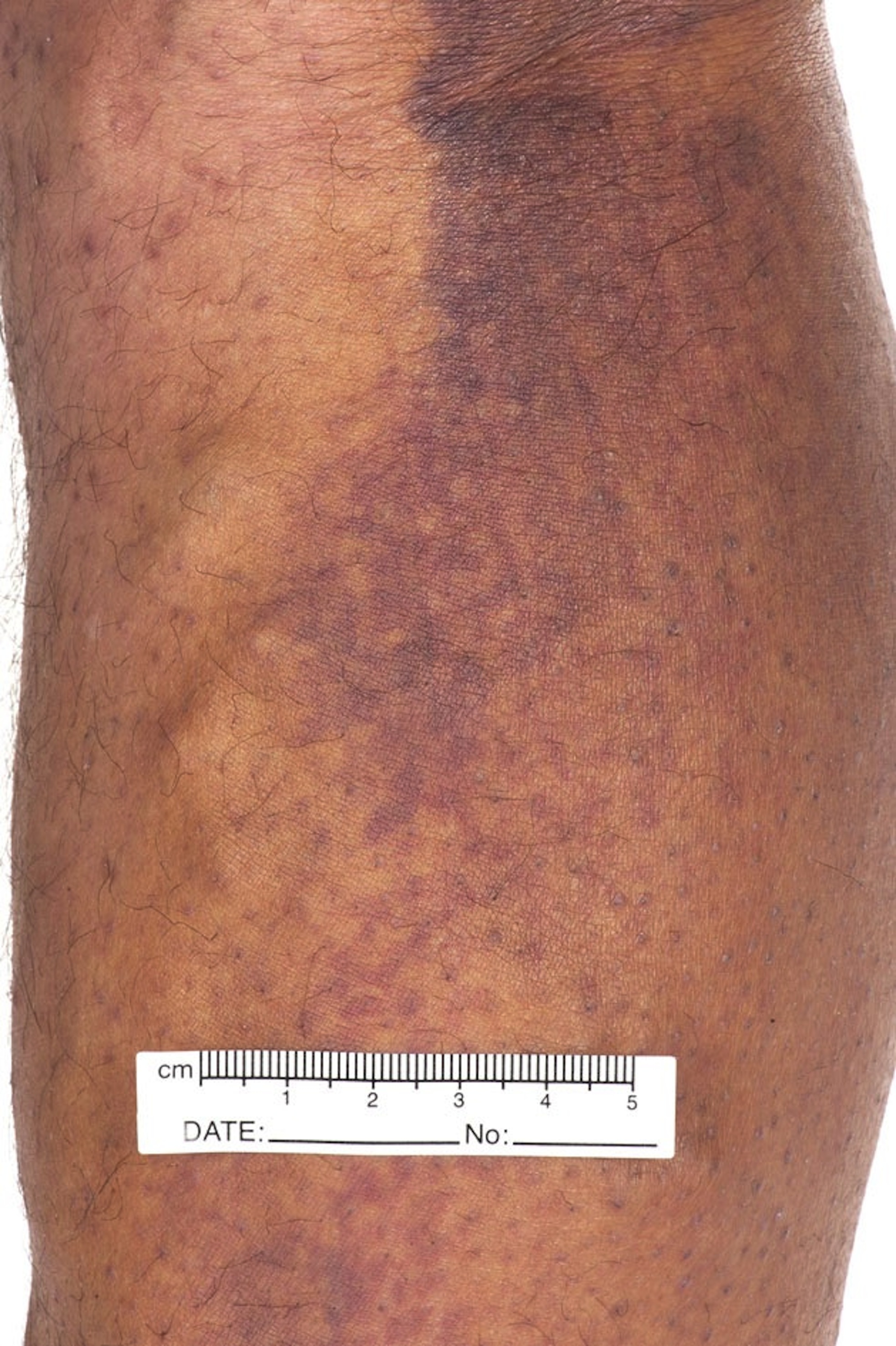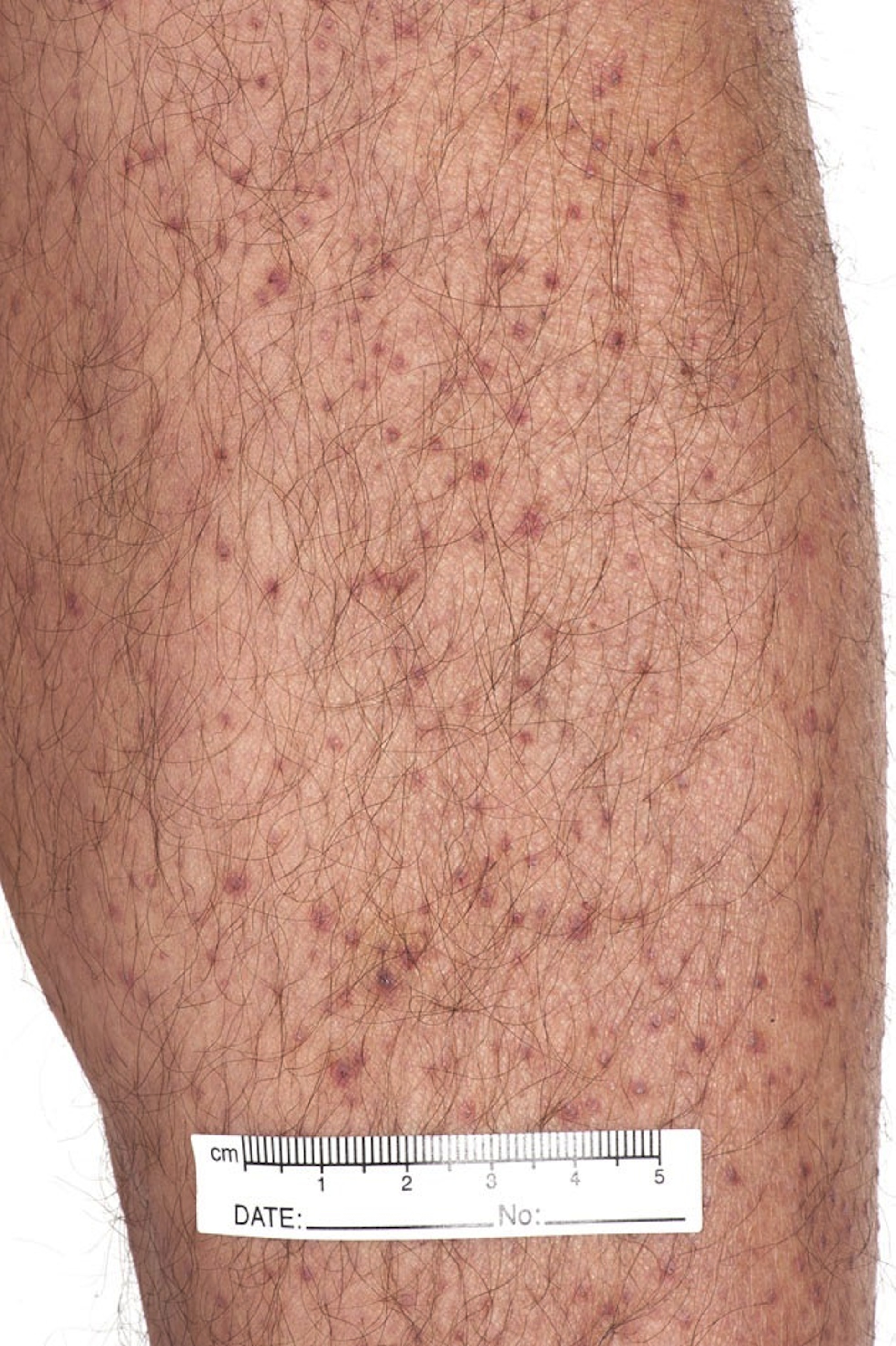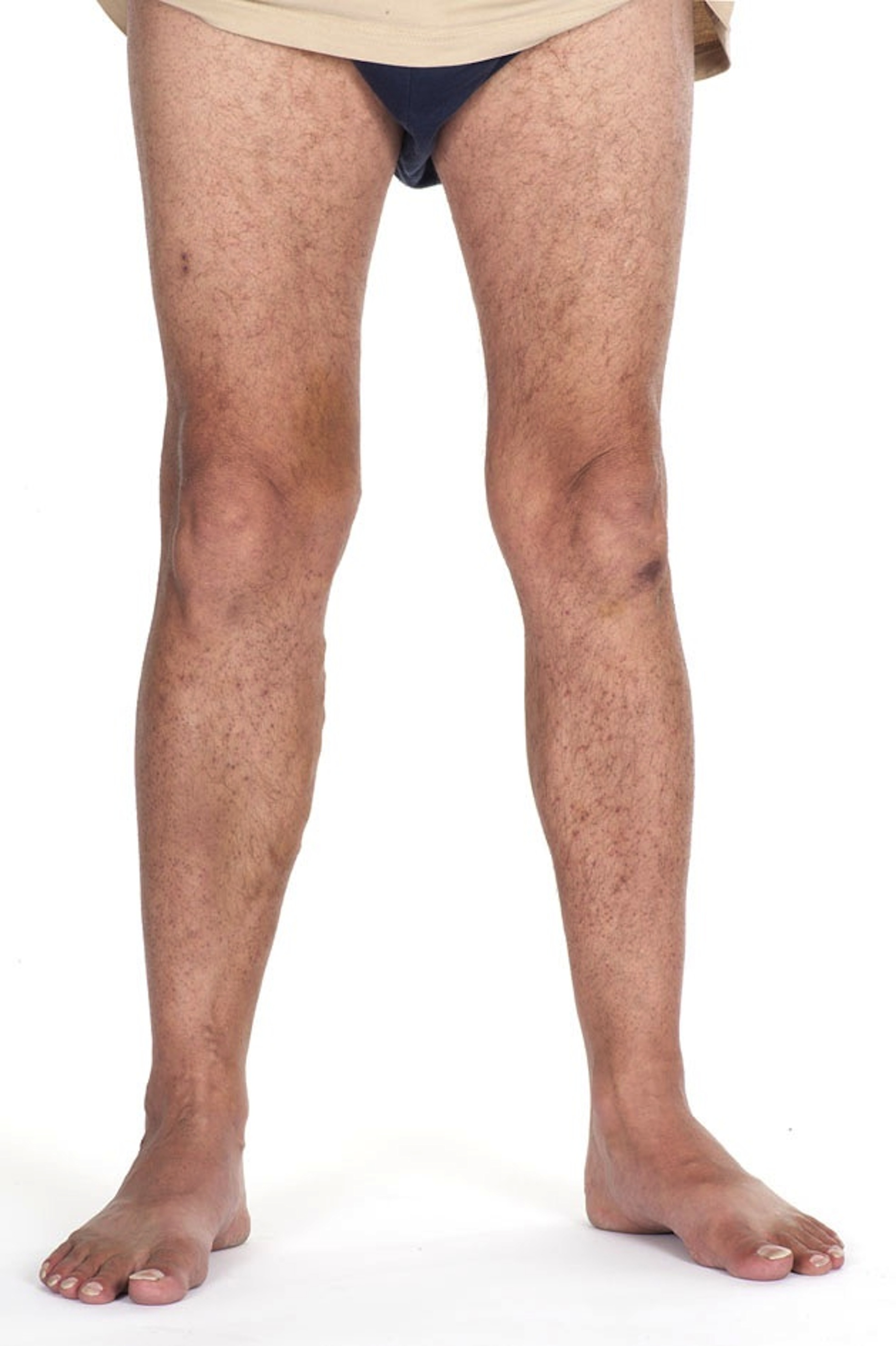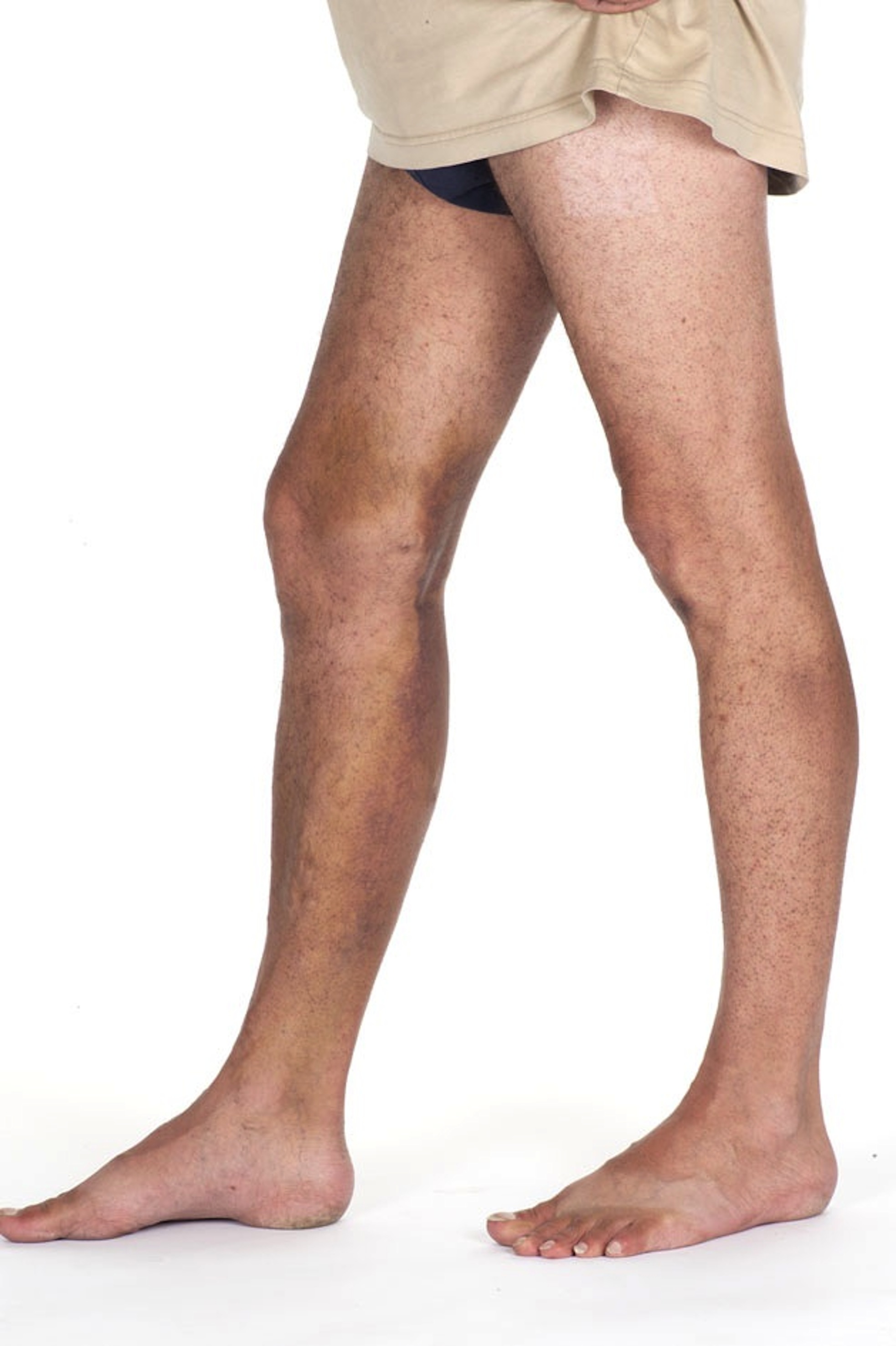Case
A man aged 53 years presented to the emergency department with a 5-week history of a progressive petechial rash over his upper and lower limbs. This was associated with right posterior thigh and calf bruising and mild tenderness that had been present for 3 weeks. He had a medical history of diverticular disease with a complicated surgical course, stable liver granulomas, hypertension and a rib haemangiopericytoma. He lived alone, had a previous history of heavy drinking, was a current smoker with a 35-pack year history and was on a disability pension. His current medications were oxycontin, endone, esomeprazole, rosuvastatin and aspirin. His drug allergies included cephalexin and flucloxacillin.
Dietary history was inconsistent during interviews. Although the patient had a regular intake of potatoes, his fruit and vegetable intake was infrequent and limited by poor financial circumstances.
 |
 |
Figure 1
|
| A. Haematoma and ecchymoses over right calf |
B. Perifollicular petechiae over right
anterior shin |
On examination, there was a haematoma over his right posterior leg, perifollicular petechiae on his anterior shins bilaterally (Figure 1a, b), and extensive lower limb ecchymoses (Figure 2a, b). There were no oral mucosal lesions.
 |
 |
Figure 2. Extensive lower limb ecchymoses
|
| A. Anterior view |
B. Lateral view |
A punch biopsy performed by his general practitioner showed dermal perifollicular inflammation and fibrosis but no evidence of small vessel vasculitis. A Doppler ultrasound of his right calf was negative for venous thrombosis. Oral prednisolone and amoxycillin were not effective in treating the rash.
On the basis of the examination findings and the history of poor vegetable and fruit intake, a presumptive diagnosis of scurvy was made. The patient’s serum vitamin C level was <3 µmol/L, which confirmed the diagnosis of scurvy. He was commenced on high-dose vitamin C (1000 mg) orally, with rapid cutaneous improvement and resolution of his ecchymoses.
Discussion
Scurvy is a condition caused by prolonged vitamin C deficiency, which leads to capillary fragility and impaired collagen synthesis. The early clinical presentation of scurvy can be non-specific; symptoms include fatigue, irritability, depression and musculoskeletal pain. Cutaneous manifestations include perifollicular purpura, corkscrew hairs, follicular hyperkeratosis affecting the legs, and areas of purpura and ecchymosis. Other manifestations include severe gum disease, anaemia and ocular haemorrhage. Untreated scurvy may result in cerebral or haemopericardium haemorrhage and can be fatal.
The perifollucular purpura in scurvy can be mimicked by vasculitis, which is palpable and not related to follicles. Pertinent differential diagnoses that have to be excluded are:
- haematological conditions including thrombocytopenia, clotting factor deficiencies and leukaemia
- drug allergy
- meningococcaemia, all of which are non-palpable purpuras.
Vitamin C is an essential element required for the biosynthesis of collagen, L-carnitine and neurotransmitters.2 It aids iron absorption3 and is also an effective antioxidant.4 Additionally, it provides immune protection and has a role in gastric cancer prevention.5,6
The Australian recommended intake of vitamin C for men and women over 19 years is 45 µg per day; the requirements increase by 2–3 times during pregnancy and lactation status.7 Smokers have been proven to require at least 35 µg per day more than non-smokers.8 This is possibly due to poor dietary intake and higher rate of metabolic ascorbate turnover in smokers.9
Previous experimental studies have shown that it takes, on average, 84–97 days to develop scurvy on a diet devoid of vitamin C.10,11 In industralised societies, scurvy is rare because of the technological advances in food processing and transportation, which makes nutritious food readily available. However, an increasing number of case reports and epidemiological studies suggest that vitamin C deficiency, especially in high-risk populations, may be more prevalent.12,13 High-risk groups include the elderly, people who live alone, alcoholics, smokers, low socioeconomic groups, renal patients undergoing dialysis, people with psychiatric conditions and Aboriginal and Torres Strait Islander peoples.14,15 This patient was found to have multiple risk factors for developing vitamin C deficiency including being a bachelor, a smoker, having a poor diet and poor financial circumstances.
Conclusion
Despite the widespread availability in Western society of foods rich in vitamin C, scurvy continues to be a condition for which physicians need to be vigilant, particularly in our ageing population. The diagnosis of scurvy can be difficult to establish and if untreated scurvy can be fatal. Cutaneous signs, including perifollicular purpura, corkscrew hairs, follicular hyperkeratosis and areas of purpura and ecchymosis, may be the only manifestations of scurvy. When diagnosed in a timely manner, scurvy is easily and readily treated.
Competing interests: None.
Provenance and peer review: Not commissioned, externally peer reviewed.